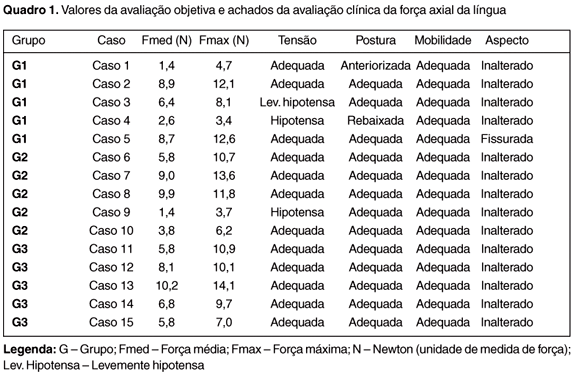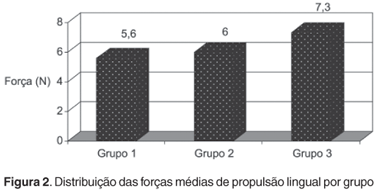PURPOSE: To quantify and to compare the forces produced by the tongues of pre-surgical mouth-breathing children, oral-breathing children enrolled in therapy and nasal-breathing children, and also to compare the findings of objective and clinical evaluations. METHODS: Transversal study with 15 children of both genders with ages between eight and 12 years: five pre-surgical mouth breathers (Group 1), five mouth breathers enrolled in speech therapy (Group 2) and five nasal-breathing children (Group 3). A clinical assessment of each child's tongue characteristics was carried out, followed by the objective evaluation of the axial centre line force of the tongue using the instrument created at Federal University of Minas Gerais. The results were descriptively analyzed using measures of central tendency and dispersion. RESULTS: The average of the force values found in Groups 1, 2 and 3, respectively, were 5.6, 6.0 and 7.3N. The average values of maximum force were 8.2, 9.2 and 10.4N. The individuals with adequate tongue tension in the clinical evaluation were the ones with highest values of average (7.0N) and maximum force (10.3N). The lowest values (3.5N and 2.0N) were obtained by the subjects whose subjective evaluation showed hypotension of the tongue. Statistical analysis indicated heterogeneous data in Groups 1 and 2, tending towards homogeneous in Group 1. CONCLUSION The average of the forces was higher for nasal breathers, followed by mouth breathers undergoing speech therapy and, finally, pre-surgical oral-breathing children. There was agreement between the results of objective and clinical evaluations.
Biomechanics; Tongue; Mouth breathing; Stomatognathic system; Evaluation






